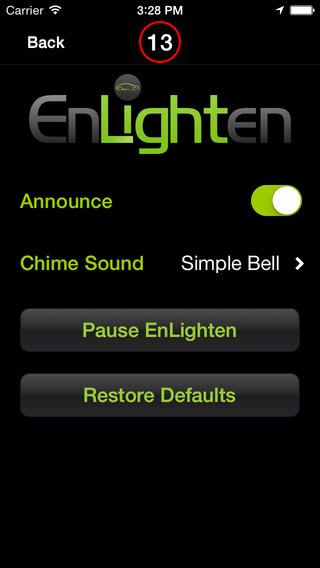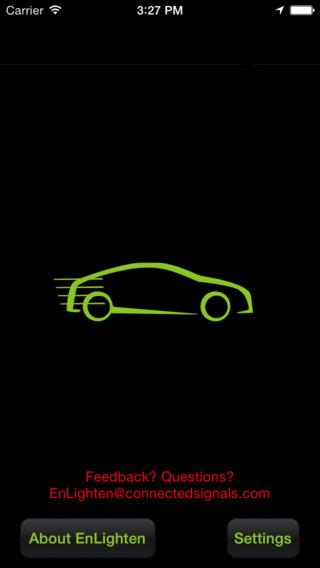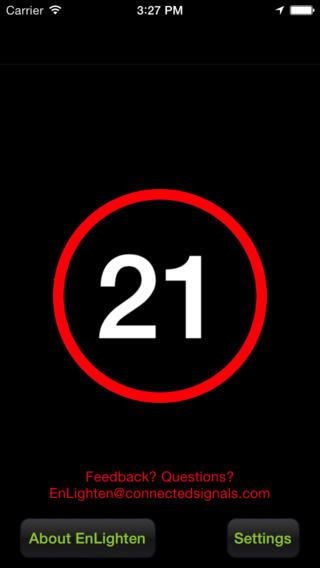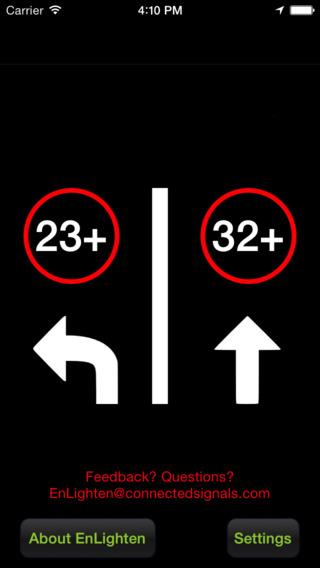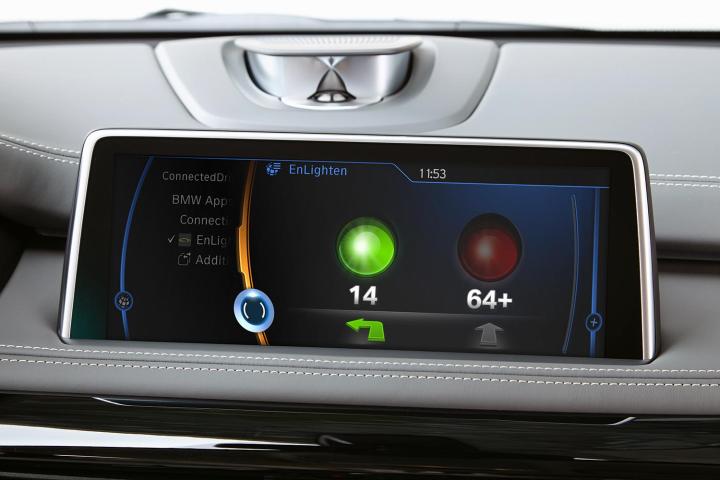
Don’t get me wrong – energy independence and pollution control are absolutely critical, and the good work done on engine development has given us 300 horsepower cars that get better than 30 MPG on the highway. But until now all meaningful improvements in fuel economy have been delivered at the factory, not on the road.
That could change soon, because one man has figured out how to use real-time information to save gas and get you through the endless maze of urban stoplights a little faster. It’s the simplest thing in the world, once you get how it works.
Get the information
In the modern era, stoplights are coordinated by a Traffic Management Center run by City Hall. At any given moment, the TMC knows which lights are red, which are green, and when they’re all going to change.
All that data is right there, so why not use it to your advantage? That’s what Matt Ginsberg of Connected Signals in Eugene, Oregon figured out.
The TMC knows which lights are red, which are green, and when they’re all going to change.
“We make driving safer, more fuel efficient, and less stressful. If you like that, you should be excited,” Ginsberg says.
The technology story goes like this – the traffic lights send their current state information to the local TMC, then the data is packaged and sent to Connected Signals, where they apply some logic and push that data out to their customers, all in real time.
To get this information to you, Connected Signals has produced a phone app that looks at your location and direction of travel, figures out when you’re likely to hit the next light, and tells you what that light is doing right now and when it’s likely to change.
“We create a predictive data stream based on our secret sauce. Turning incoming data from 10,000 traffic lights into predictions in real time is incredibly hard. But that’s good. We like hard,” Ginsberg says.
Simplify the information
Obviously, yet another app running on your phone while you’re driving is far from a perfect solution. You don’t want rear-end the guy in front of you while you’re checking your phone. So the EnLighten App (Android, iOS) offers simple audio or at-a-glance indicators to tell you whether you’re likely to make the next light, or when that red light is going to turn. It even chimes a second before the light turns green to let you know that it’s time to wake up and drive.
That’s Phase 1, and Phase 2 is even better. BMW is integrating the iOS version of the EnLighten app into its cars through the navigation display.
“The most challenging aspect was to integrate the EnLighten app in a safe manner. We display only the most important information,” says Christian Schmid, Senior Advanced Technology Engineer at BMW.
When the EnLighten app is working, the vehicle’s display shows the current status of the traffic light in front of the car in real time, as well as a countdown to when the signal will change. Based on the current vehicle position and speed, BMW recommends whether to stop for the traffic light or proceed through.
BMW’s integration even looks at your turn signal state to determine whether to tell you about the straight-ahead light or the turn lane light. Perhaps the best part is that any BMW that supports the BMW Apps option will support EnLighten. That means you can install and use this feature in BMWs dating back to the 2011 model year.
Too good to be true?
As with any new technology, there are limits in the first implementation. The biggest challenge is that municipalities are shy about sharing their information.
“Cities don’t want to be the first, but they also don’t want to be last.”
“The first city was very hard. We’re now getting data from 100 towns and cities. Cities don’t want to be the first, but they also don’t want to be last. We’re seeing this snowball. I think we’re going to be in 50% of cities in the US by the end of 2016,” Ginsberg says.
The second challenge will be to get the data integrated with more manufacturers’ offerings – and into the Apple CarPlay and Android Auto platforms. That will require customer demand, which should ramp up quickly as this feature gains traction.
Saving time and saving gas
So how does this tie in to fuel economy? Easy – when you know what’s going to happen in the near future, you pretty much automatically change your driving style. I test-drove a BMW equipped with EnLighten and when I knew that the green light ahead of me was going to turn red, I just lifted off and coasted down to the light. When I knew I had a green coming up, I just kept cruising – avoiding a slow-down and re-acceleration. I went through every light smoother and faster because I knew what was about to happen.
The benefits of this information are primarily personal, but they are also cumulative as more and more drivers get advance notice of light changes. Drivers who use the EnLighten system can see 7 to 10 percent improvement in city fuel economy. Ginsberg and BMW think that could add up to 30 billion gallons of gas saved worldwide, annually.
“That’s enough to move the needle on climate change,” Ginsberg says.
The next phase
The implications of predictive stoplight technology don’t stop with changing your driving behavior. When your car has access to data about when a red light will turn green, it can make better decisions about engine start/stop, regenerative braking, and even engine power delivery. And the story goes on from there.
“This is just the first step towards a number of technologies with smart cities interacting with the car. We can make smarter predictions about what lane you should be in. This is the next step to the fully connected car, which is our strategy moving forward,” Schmid says.
Apple and Android users can download and use the EnLighten app free of charge here.
